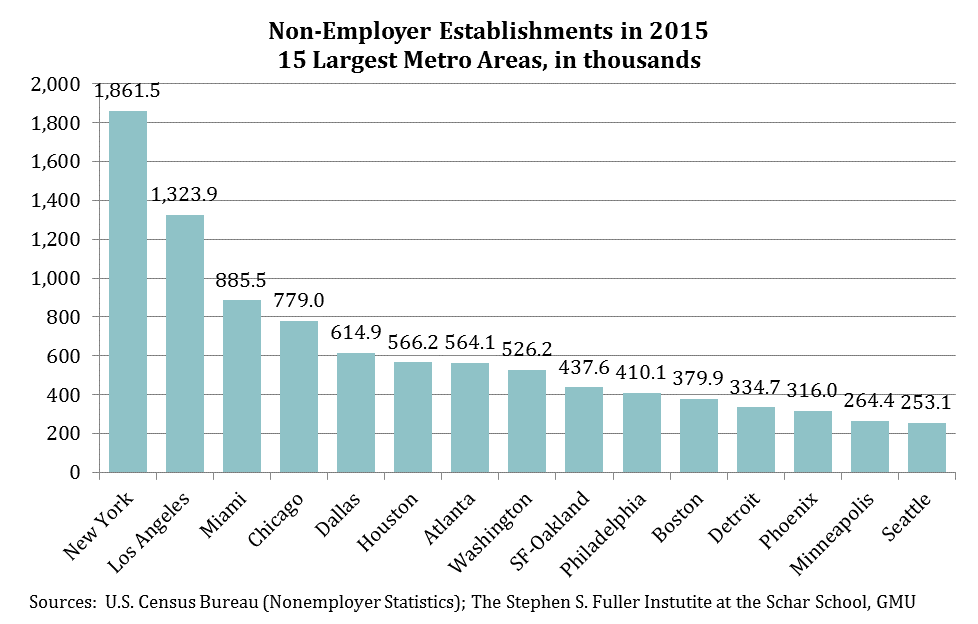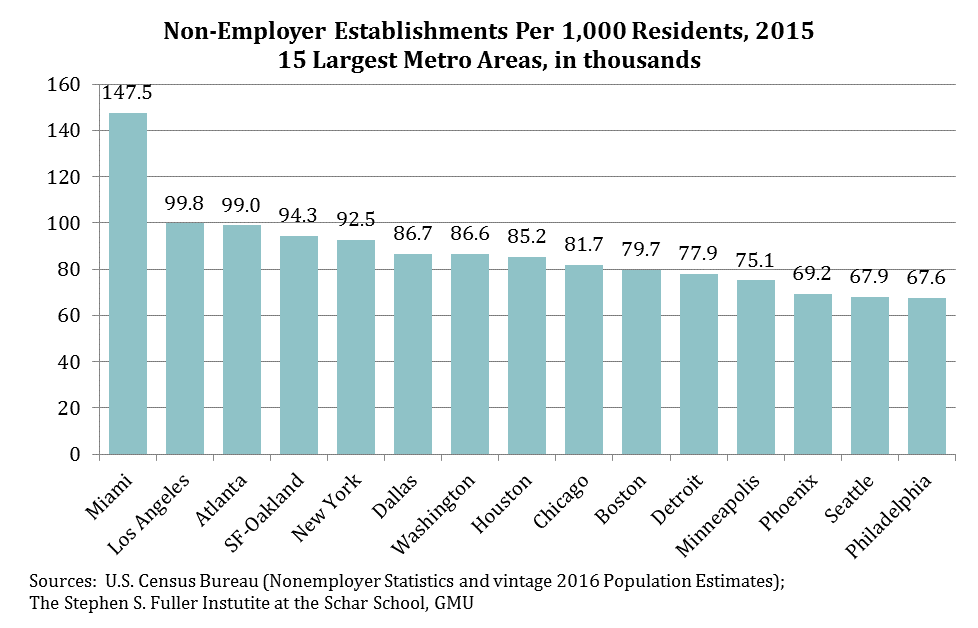From The Miami Herald:
South Florida is an economy of giggers, and we have the numbers to prove it.
A new report from George Mason University in Washington shows that the Miami-Fort Lauderdale metropolitan area leads the nation both in growth and in numbers of non-employer firms per capita. Non-employer establishments are considered one good way to measure the rise of the Gig Economy — that is the self-employed, freelance workers and independent contractors that often aren’t counted in traditional government measures of job growth.
Between 1997 and 2015, the number of non-employer establishments in the Miami metropolitan area rose 142 percent, more than twice the rate of the national average, 58.6 percent, the report found. The second-fastest growing metro area, Atlanta, grew 126 percent, while Dallas grew 95 percent, Seattle grew 48 percent and Boston 31 percent.

On a national scale, the U.S. has also experienced significant growth in non-employer establishments growing from 15 million in 1997 to more than 24 million establishments in 2015, the report showed.

Of the 15 largest metros, Miami had the third-largest number of non-employer establishments in 2015, 885,500, and on a per capita basis, it was No. 1.

The report also showed that Miami lags other large metro areas in average receipts (sales/revenues minus expenses) per establishment, at $44,100, compared to the national average of $47,800.
“Overall, in Miami’s economy, non-employer establishments are somewhat more prevalent, and therefore important, than in its peer metros. However, the average receipts in these establishments are relatively low, suggesting a larger share of part-time and/or low value-add activity,” said Jeannette Chapman, Deputy Director and Senior Research Associate at The Stephen S. Fuller Institute at George Mason University’s Schar School of Policy and Government, in an email. Find the report here.
Experts differ on exactly how large the Gig Economy is — these jobs don’t fit neatly into categories the government tracks — as well as on the pluses and drawbacks for workers and the economy. But this new report adds further evidence that the Gig Economy is growing faster than traditional employment — and it is here to stay.
A 2016 McKinsey Global Institute Report found that about 27 percent of working-age people in the United States and Europe engage at least partially in independent work. A 2016 study by the Minneapolis Fed found a 37 percent engagement rate in the U.S., while government economists have estimated that about 40 percent of Americans will be working outside traditional full-time jobs by 2020.
The Gig Economy is larger in South Florida — always a hotbed for self-employment and small business activity — than in most parts of the country partly because there are fewer large corporations than in other metros, said Kevin Greiner, a senior fellow at the Florida International University Metropolitan Center, in a Miami Herald report in September.
And much of this activity is in white collar professions, too. While the young Miami economy has always depended on foreign immigration for its population growth, Miami-Dade tends to draw more professional and higher-income immigrants who create new businesses, Greiner said. In addition, the Miami-Fort Lauderdale metropolitan area ranked No. 1 among 40 large metros in this year’s Kauffman Foundation Index of Startup Activity measuring the rate of new business creation.
